Tapioca flour production line
Starch production line / Chat on line / Give me a price / Date:2018-12-15
Originating in South America, tapioca, together with potato and sweet potato, is one of the world's three largest tuber crops. The world's cassava cultivation has a history of nearly 5,000 years. Due to its high starch content, tapioca is widly processed into starch in tapioca flour production line.
1.Process description of tapioca flour production line
Fresh potato-conveying-sediments cleaning-washing-crushing-slurry and residue separtion-desanding-protein separation-dehydrating-air flow drying-sieving and finished products packaging
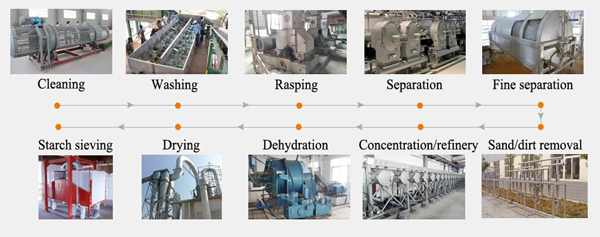 Tapioca flour production line
Tapioca flour production line
2.Design introduction
DOING tapioca flour production line adopts advanced, scientific, reasonable and mature technical processes at home and abroad: one-time cleaning, secondary crushing, secondary washing, separation, dehydration, and negative pressure airflow drying production technology, which has the advantages of high starch yield, high whiteness and less impurities.
3. Main technical process in tapioca flour production line
This production line uses fresh cassava as raw material to produce cassava starch that meets requirements.
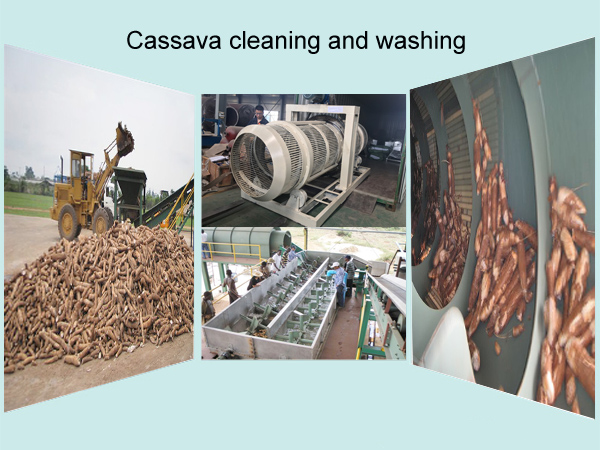 Cassava cleaning and washing machine
Cassava cleaning and washing machine
a. Cassava cleaning and washing section
The processing of fresh cassava in tapioca flour production line generally commence with cleaning and washing, whose main purpose is to remove all the attached impurities to reduce starch ash, and facilitate the work of the following separation and purification process. Fresh cassava that piled up in the ground is firstly transported by a belt conveyor to a cleaning machine, and the attached debris on the cassava and the dirt and stone therein are roughly removed.
Washing process follows cleaning which mainly serves to further wash away the mud and sand and other impurities of tapioca, and the peeling rate can also reach about 80%. Note: Operators should pay attention to the pressure of water in tapioca flour production line. Low water pressure can not remove sediment. Generally, the water pressure cannot be lower than 0.25mpa.
b. Cassava crushing section
Crushing takes place after washing and is sometimes applied to whole tubers. And the crushing serves to break cassava structure and release starch from cassava cell. In tapioca flour production line, from tapioca cleaning and conveying to the crushing process, it is a continuous operation. After the crushing, the slurry is sent to the downstream process by the transfer pump.
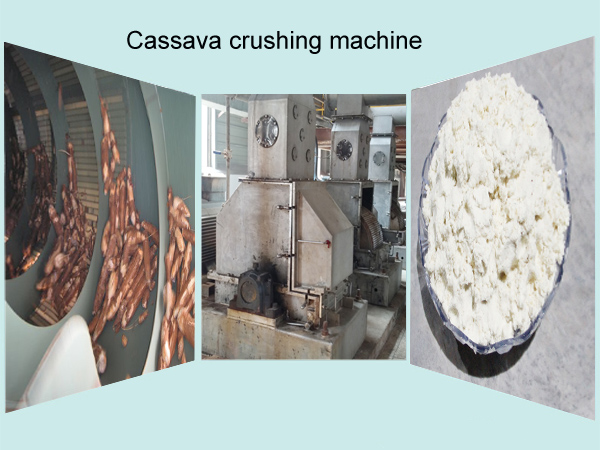 Cassava crushing machine
Cassava crushing machine
c. Starch and residue separation and desanding section
The slurry mixture is separated by four stage centrifuge sieve, and the separated cassava waste is transported to the slag field in tapioca flour production line. The separation process depends on centrifugal force to complete the slurry and residue separation, achieve the purpose of extracting starch, which plays a certain role in the yield of starch.
The separated starch slurry still contains impurities such as soluble and insoluble protein, cell sap and sand which need to be further proceed in tapioca flour production line. Sand contained in the thick slurry must be removed by the desander.The primary sand removal can remove 95% of sand, and the secondary sand removal can basically remove sand, and the working pressure of the desander should be 0.2-0.3mpa.
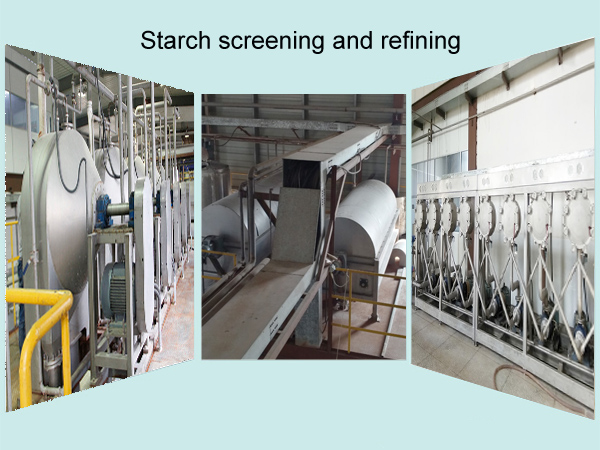 Tapioca flour separation and refining machine
Tapioca flour separation and refining machine
d. Ptotein separation section
The small amount of insoluble protein and 0.2-0.3% soluble protein and other minerals remain in starch slurry will seriously affect the quality of the starch. In tapioca flour production line, this process adopts the principle of countercurrent washing to achieve the washing, refining and recovering of starch slurry. The working sequence is that starch to go backwards from the first grade, while the washing water goes forward from the last level to the front, so that the starch milk basically meets the requirements of the finished product in terms of whiteness.
e. Dehydration and drying section
This two step in tapioca flour production line are both for starch moisture reduction. The moisture content of the starch after dehydration reduce from 60% to 38-40% and then the wet starch is sent to the airflow dryer for drying operation through a screw conveyor. And the dried starch water content is about 13.5%, consistent with the standards require of the finished products.
f. Sieving and packing section
To ensure the fineness of the final product confirm to commercial standardards, sieving is a necessary section in tapioca flour production line. Sieving mainly serves to remove large starch particles and agglomerated starch. After the starch sieving, the finished starch is packed into 25Kg or 50Kg according to the requirements.
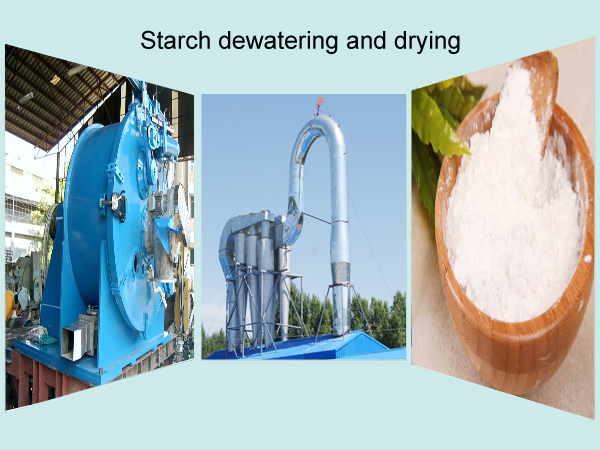 Tapioca flour dehydration and drying machine
Tapioca flour dehydration and drying machine
Main process parameters in tapioca starch manufacturing plant:
1. Water distribution for washing1:4.
2. Crushing water distribution 1:1.
3. By screening and washing, fiber content in the slurry milk is less than 0.02%; the concentration of the slurry milk is 5-6 Bé.
4. The first stage separation, slurry concentration is 5-6 Bé, and the pulping concentration is 12-15 Bé.
5. The second stage separation slurry concentration is 8-10 Bé, and the pulping concentration is 20-22 Bé.
6. The concentration of the slurry into the peeler centrifuge is 20-22 Bé.
7. After dehydration, the moisture content of the wet starch is less than 40%.
8. The finished starch has a water content of ≤ 13.5%.
Prev:Extraction of starch from sweet potato procedure
Next:None

 Call us
Call us Chat online
Chat online

